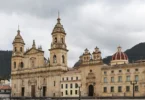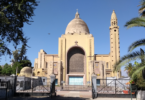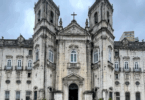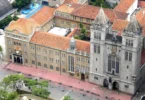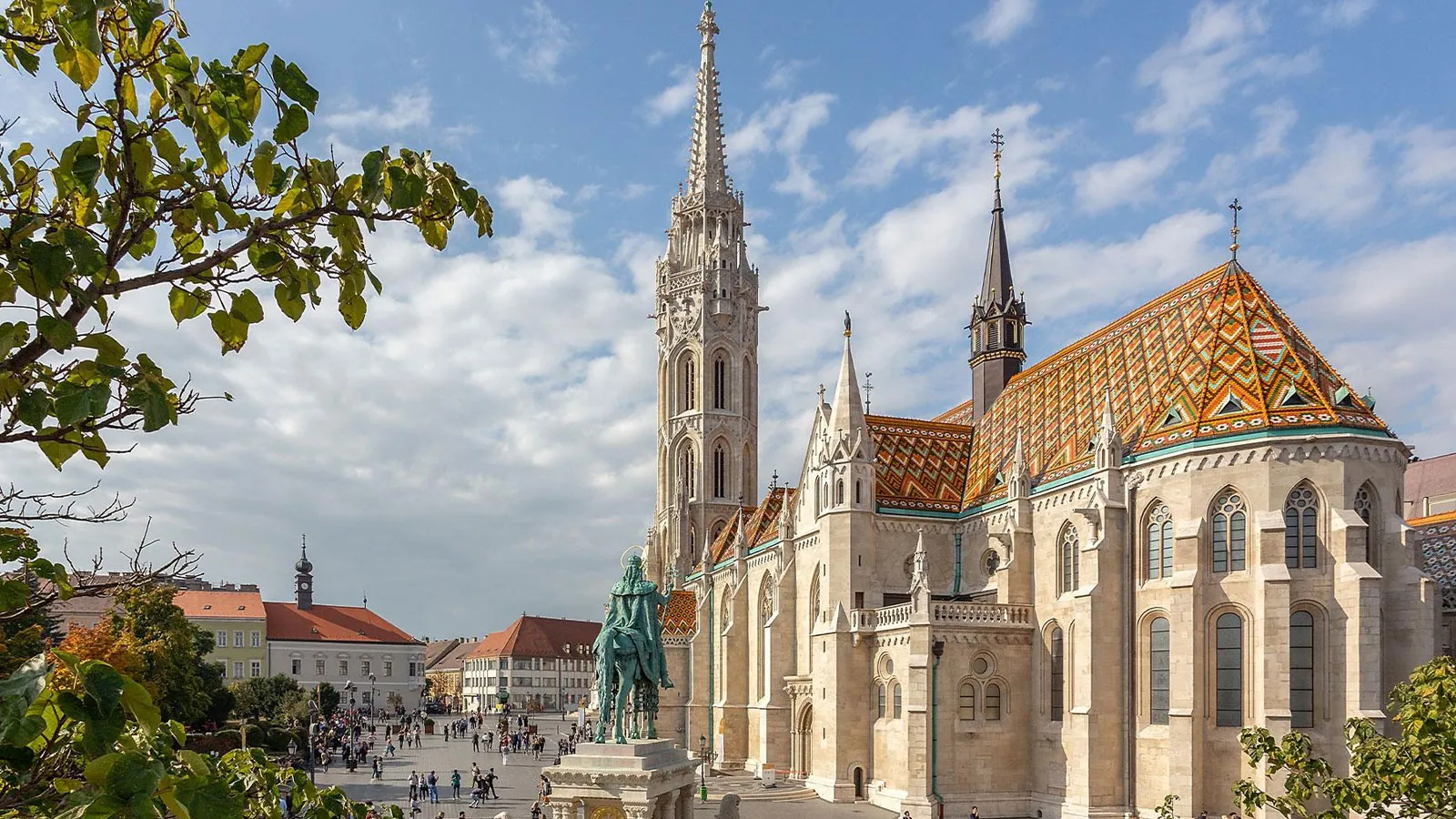
Introduction
Matthias Church is one of the finest churches in Budapest and the most unique churches in Europe. Located atop the Buda Castle hill, it has been serving the citizens of Buda Castle Hill since 1015, its foundation by the first Hungarian king. Bored with churches? Not this time. Full of surprises, mysteries, and treasures, the church has a breath taking interior with colours inspired by orientalism and romantic historicism. Its mystically exotic atmosphere paired with its Neo-Gothic features differentiates it from any other church.
The Church of the Assumption of the Buda Castle (Hungarian: Nagyboldogasszony-templom), more commonly known as the Matthias Church (Hungarian: Mátyás-templom), more rarely the Coronation Church of Buda, is a Catholic church located in the Holy Trinity Square, Budapest, Hungary, in front of the Fisherman’s Bastion at the heart of Buda’s Castle District. According to church tradition, it was originally built in Romanesque style in 1015, although few references exist. The current building was constructed in the florid late Gothic style in the second half of the 14th century and was extensively restored in the late 19th century. It was the second largest church of medieval Buda and the seventh largest church of the medieval Hungarian Kingdom.
It is a historic building with an important history. Two Kings of Hungary were crowned within its walls: Franz Joseph I of Hungary and Elisabeth, and Charles IV of Hungary and Zita of Bourbon-Parma. The church was also the location of the “Marian Miracle” of Buda. In 1686, during the siege of Buda city by the Holy League, a wall of the church – used as a mosque by the Ottoman occupiers of the city – collapsed due to cannon fire. It turned out that an old votive Madonna statue was hidden behind the wall. As the sculpture of the Virgin Mary appeared before the praying Muslims, the morale of the Muslim garrison collapsed and the city fell on the same day.
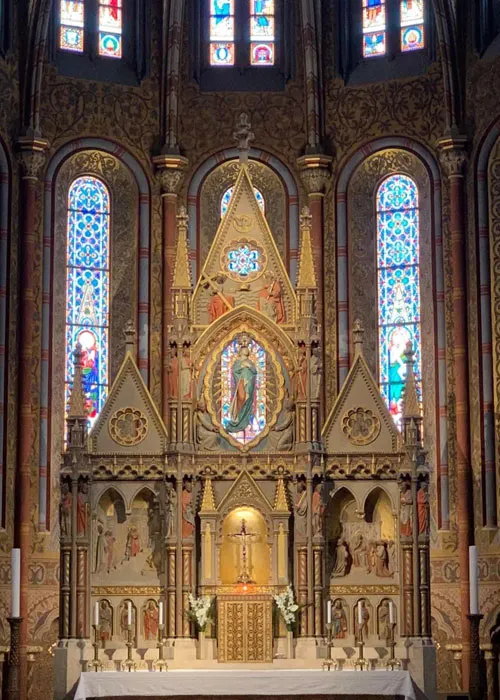
Standing on Buda’s Trinity Square, the building has been shaped by transformations, natural disasters, wars and sieges over the past 800 years. During the Turkish occupation, it was used as a mosque, its tower was used as a minaret, but it has been revived every century to become one of the most beautiful and most visited churches in Hungary today. Matthias Church was built in the 13th century, and since then it has been extended and rebuilt so many times: each era, style, ruler and Castle siege has left its mark on the building. It was even a mosque in 1541 during the Turkish occupation. It is one of the city’s oldest buildings and it is located on the Buda hill, in front of the Fishermen’s Bastion, not too far from the castle. Also known as the Church of Our Lady, this holy building constructed in the florid late Gothic style has more than 700 years of history. It has been the site of several coronations as well as two royal weddings.
Matthias Church was returned to its gothic characteristics in a 19th century restoration. The roof is covered with the famous Zsolnay ceramic tiles, giving an extra touch of charm to the whole structure. The church is characterized by a unique atmosphere and it is decorated with frescoes that have been added during the restoration works between 1895 and 1903. On the left wall, there is a fresco representing the Renaissance; it includes some eastern details representing the Turkish reign in Hungary. Matthias church is home to the ecclesiastical art museum, showcasing several sacred relics and replicas of the Hungarian royal crown and coronation jewels.
Despite being founded in the thirteenth century by King Bela IV (some posit that the first church here was built in the eleventh century), the name Matthias Church is actually a reference to the monarch Matthias Corvinus who was twice married there. Its official name is the Church of Our Lady.The diverse and often turbulent history of Buda is reflected in the eclectic style of Matthias Church, which includes a mostly gothic dramatic exterior and a vibrant interior with allusions to the various rulers of the city, including the Ottomans.
Matthias Church is a Roman Catholic church located in front of the Fisherman’s Bastion at the heart of Buda’s Castle District. According to the tradition, the first church on the site was founded by Saint Stephen, King of Hungary, in 1015: this is based on an inscription erected in 1690 inside the church and burned in 1748, which some previous references seem to confirm. However, there is no clear evidence of the foundation by St. Stephen. This building was destroyed in 1241 by the Mongols; the current building was constructed in the latter half of the 13th century. Originally named after the Virgin Mary, taking names such as “The Church of Mary” and “The Church of Our Lady,” since the 19th century the church has been referred to as Matthias Church, after King Matthias, who ordered the transformation of its original southern tower.
Matthias Church (officially called the Church of Our Lady, but all locals call it “Matyas Templom”) has quite the history and a story to tell. According to historians a church called Church of Mary stood on the site of the current building founded by Saint Stephen, the first king of Hungary in 1015. The current Roman Catholic church was founded by King Bela IV. after the Mongol invaders left Hungary in 1242 in complete ruins, and King Bela IV decided to move the royal residence from Esztergom in the Danube Bend, to the Buda Hills.
Architecture of The Church of Our Lady of Buda Castle
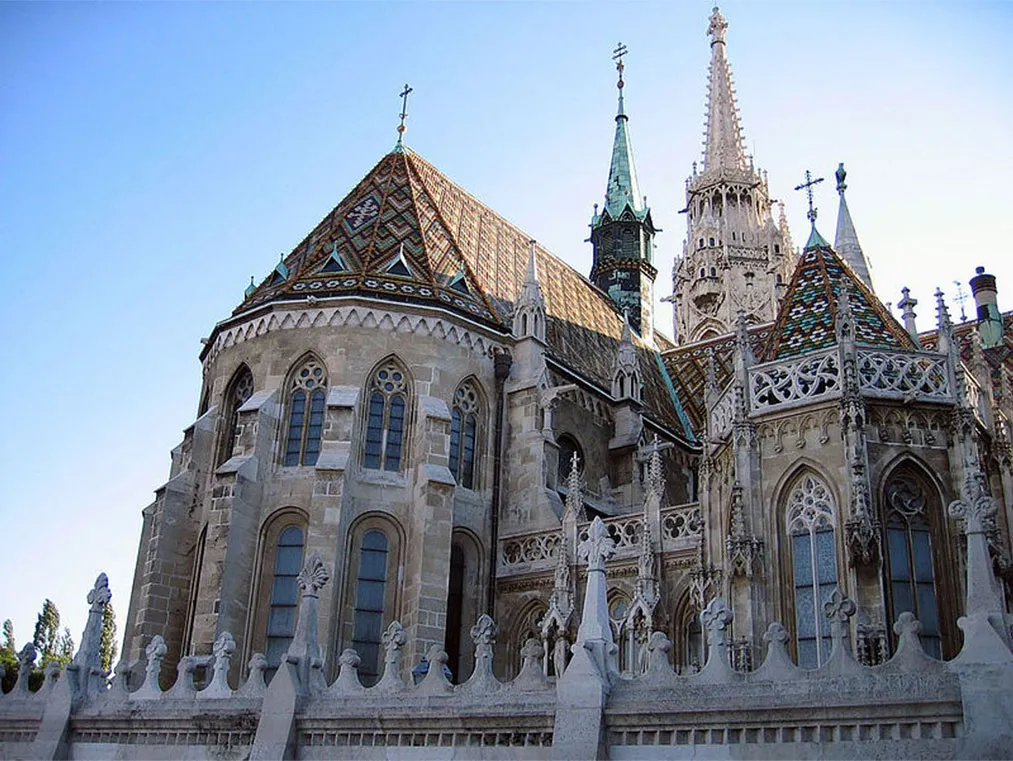
Architectural styles: Gothic architecture, Gothic Revival architecture
Architects: Frigyes Schulek, Samu Pecz
Despite the countless changes (destruction, renovations, expansions, etc.) that the Matthias Church underwent over the centuries, it remains overall surprisingly harmonious, all thanks to the major restructuration carried out by Frigyes Schulek at the 19 th century. The facade of the church, flanked by the Béla and Mátyás towers, is resolutely neo-Gothic in style (gargoyles, large windows and spire). The rose window and the main portal, crowned with a bas-relief designed in the 19th centuryth century by Lajos Lantai, are definitely worth a peek. The building is decorated with a glazed-tile roof similar to Burgundian roofs.
The roof of the Matthias Church is aesthetically covered with beautiful hexagonal patterns of coloured tiles and two rows of dragons spit out the rainwater on the corners of the Matthias tower. The 78`16 metres Matthias Tower is equipped with a very narrow staircase with 107 steps that lead up to the panorama terrace. Among the six bells of the tower, the Christ Bell, weighing 4400 kg is the biggest.
Although very harmonious, the interior of the church reveals the building’s long history. The lower part of the building is characteristic of the Romanesque style, while the upper part is distinctly Gothic.
- The neo-romanesque crypt, dating from 19 th century
- The frescoes painted by Károly Lotz in the chapel of Saint-Ladislas;
- The tombs of Béla III of Hungary and Agnes of Antioch in the Chapel of the Trinity;
- The stained glass designed by Bertalan Székely, Frigyes Schulek and Károly Lotz;
- The gothic portal from the 14 th century;
- The richly carved pulpit ;
- The high altar designed by Frigyes Schulek and inspired by Gothic triptychs.
Matthias Church Roof Tiles
Architect Frigyes Schulek is credited with largely restoring St. Matthias Church to its original splendor. He added magnificent diamond patterned roof tiles and gargoyles. The colorful ceramic tiles of the roof of Matthias Church were made by the famous Zsolnay Manufacture. It gave the building a mild modern look. Here is a picture of the beautiful tile patterns. They reminded me of the colorful tiles in Vienna Cathedral – Roof Tiles of St Stephen’s Cathedral Vienna and those in Basel Minster, Switzerland. The Fisherman’s Bastion on Buda Castle hill. Budapest, including the Banks of the Danube, the Buda Castle Quarter and Andrássy Avenue is in UNESCO World Heritage list since 1987.
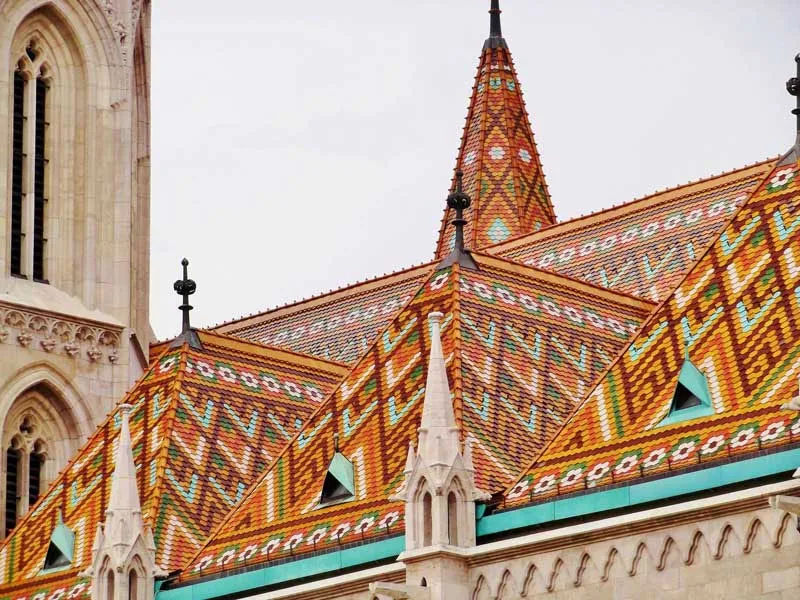
Matthias Church on the Castle Hill
Matthias Church is unlike many of the typical churches dating back to the Middle Ages. Be prepared to be surprised for its off the beaten track inner beauty. The church was used as a coronation church by Hungarian kings for centuries, also a mosque for over 150 years by the Ottoman Turks, once owned by Franciscans, Jesuits, now a thriving Catholic church with holy masses, concerts, plenty of weddings, thousands of tourists. The graceful architecture and stunningly rich, all embracing wall paintings of the majestic building will leave you speechless.
While the outside of Matthias Church offers the historical beauty of traditional Gothic churches with delicate turrets, the coloured tile roofs already give away that this church is not following the usual recipe: entering inside the church you will experience one of the most welcoming combinations of warm lights, shadows and colours with orange, brown, golden hewed frescos reaching from floor to ceiling, beautiful stain glass windows, far reaching arches, century old wooden pews, medieval remnants.
King Matthias the Fair
Instead of St Matthias, the name of the church refers to King Matthias Corvinus the Fair, who remodelled and expanded the building in Gothic style in the 15th century, adding the southern high tower, called Matthias bell tower. He also made the church one of the best wedding venues in Hungary. After all it was his favourite wedding place too. King Matthias was the son of legendary John Hunyadi, the ingenious military opponent of the Ottoman Empire, the Governor of the Hungarian Kingdom, the Voivode of Transylvania. King Matthias’ father can also be credited for ringing the church bells all over Europe at midday every day. King Matthias was not less legendary than his father.
He was crowned the king of Hungary without a royal blood line. Then quickly became a mythical hero of many a Hungarian legends: he was said to be travelling around in disguise to get a true picture of the lives of his subjects, doing justice to the suppressed poor, and publicly shaming the powerful and arrogant
15th century: Matthias Church
The church reached its peak in medieval prosperity during the reign of king Matthias Corvinus. The king built the southwest bell tower, one of the finest pieces of Gothic architecture in Hungary. According to the coat of arms of Matthias, the south tower, which collapsed in 1384, was rebuilt in 1470. Apart from its destroyed helmet, the bell tower still retains its original form, although in the late 19th century a complete replacement of its stone material became inevitable. However, the head of the great arch supporting the choir still preserves its original stone. Matthias also erected a royal oratory near the southern sanctuary of the church, but it was completely destroyed during the Turkish occupation. At that time, at the end of the 15th century, they began the construction of the north western tower, which had already been completed with the exception of the helmet before the Turkish conquest.
Organ of the Matthias Church
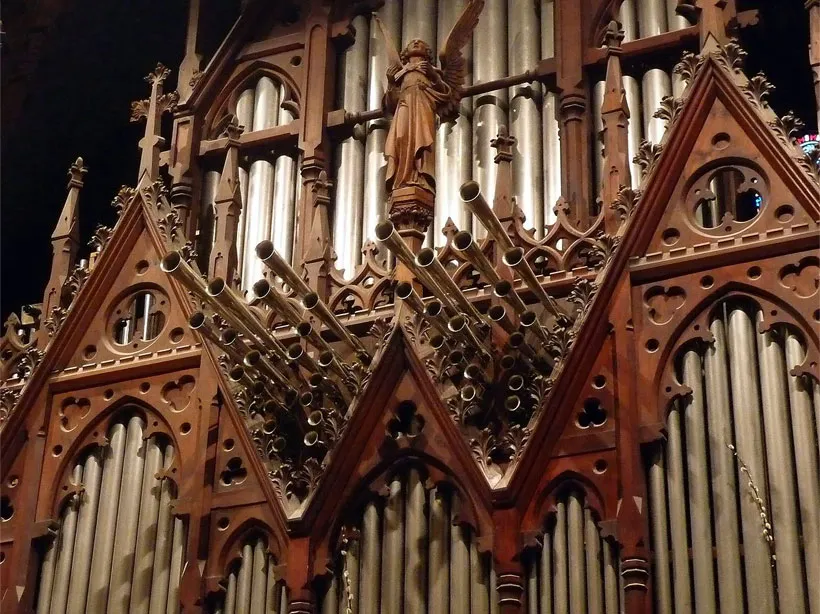
We have no written records of the first organs of the main church in Buda, but only references, for example, in the Thuróczy Chronicle, which reads: “… the bells of the temples were drawn and in them the trombone, organ and music glorified God.”) that in Matthias’s time there were organ builder masters in Buda, like Stefano Lorenzo, whose small positive, allegedly made for Matthias’ order, is currently on display at the Correr Museum in Venice. It is likely that the temple was also equipped with an organ.
The Church of the Assumption was used by the Turks as a mosque in 1541. When Buda was liberated in 1686, the building was occupied by the Jesuits, who soon repaired it from the Queen’s donation. The musicians’ gallery was also equipped, and in 1688 Archbishop György Széchényi of Esztergom donated a hundred organs of positive organ to the church. Just seven years later, Pál Esterházy, a music lover and composer palatine, expanded the chorus of the church to raise the light of the musical masses and erected a new organ, possibly larger.
Esterházy’s organ worked for almost three decades. In 1723, during a fire, the temple’s front wall fell and destroyed the instrument. In the same year, the Jesuits re-archived the choir and soon equipped it with a new “suitable” organ. The Benedictine monastery lived in the middle of the century, the church was even more brightly decorated. It was then that a contract was made with a certain organ builder named Martin, who, probably in 1747, made two identical instruments for the Jesuit and Franciscan churches of the castle, the Church of the Assumption and the Virgin Mary. His own handwriting testified to this on two facades of the organ of the latter church, which was demolished in 1934.
In 1768 they began to build a larger musical instrument again from the legacy of a 2015 comrade. We don’t know the builder. This organ was also featured in Franz Liszt’s Coronation Mass in 1867. In 1874, when the church began to be rebuilt, it was valued for sale, which left a very detailed description of it. We do not know any more about his fate, according to his contract Antal Dangl took over the organ in Arad, who built the next instrument. After nearly twenty years of restoration work, Dangl made a new organ for the coronation church, which opened. Its carved, neo-Gothic house was designed by Frederick Schulek.
The angel statue on the organ cabinet is believed to recognize the features of Ferenc Liszt. The wardrobe of 1893 also serves as the frame of today’s organ. Dangl’s organ was a three-manual, mechanical, tapered instrument. It soon became apparent that, due to its poor disposition and structural deficiencies, it could not meet the music and artistic needs of the temple. A new instrument had to be built to which, on the occasion of the 40th anniversary of the reign of Franz Joseph as Hungarian King, he donated 50,000 crowns from his private fund.
The work was entrusted to the Rieger Organ Factory in Jägererndorf, which in 1909, according to the plans of Viktor Sugár, built a late-romantic, four-manual organ with 77 registers (Op. 1500), called the King’s Organ. Manual whistles were placed in the attic of the temple, according to the fashion of the time, and his voice was guided into the temple ship through a 14-meter-long wooden belt on the ceiling. An organ was also planned for the so-called “small band” in the north, but it was not ready at that time.
In 1931 (again, according to Sugar’s plans) the instrument was expanded to 86 registrars by the Rieger factory in Budapest. During the rebuilding, the whistles were removed from the attic and the interior arrangement of the organ was altered in an extremely unfavorable way. The huge play table was replaced with a smaller one and – for the first time in Europe – equipped with the American Setzer combination, which made it possible to store various tone combinations, greatly facilitating the organist’s work during the performance. The instrument, which was heavily damaged during the Soviet siege of 1944, was temporarily rebuilt after the war. He was completely overhung, suppressed due to inadequate wind supply, his voice silent and pale. Its condition was getting worse and eventually it was inevitable to rebuild. In 1979 a committee was formed with the help of Ferenc Gergely, István Koloss, István Baróti and organist Bertalan Hock.
The “symphonic” organ, which combines the valuable and still salvable whistles and structural elements of the old instrument, combines romantic and baroque style features. The reconstruction was completed by the Rieger-Kloss organ factory in Krnov, Czech Republic, within a year. In January 1984, a new five-manual organ with an electropneumatic tractor and 85-register, 8-line (Setzer) combination was opened (RIEGER Op. 3540). After the grand organ was handed over, the two-manual 18-register telegraph was originally designed in the chapel (originally a small orchestra) of the Knights of Malta (originally a small band), which was originally located above the sacristy. This instrument could be heard from the grand organ’s play table, but also independently during liturgy or concerts in the church space.
The Turkish Occupation: Mosque from Church
In 1526 the Turks occupied Buda, ruined most of the churches, but left the Church of Our Lady erected and turned it into a mosque. Artefacts were taken away, ornate furnishings were destroyed, altars and paintings were covered with whitewashed brick walls. When the Christian mercenary troops led by Charles V, Karl V. Leopold imperial generalissimo re-gained the Buda Castle from the Turks, not much survived the Ottoman years by the end of the siege of Buda in 1686. After the Turkish era, a new church was constructed on the remains in Baroque style
Mary Gate (Southwest)
The oldest part of the church at the foot of the bell tower in an atrium dates from the 14th century. This is the only real Gothic piece, others our reproductions by Frigyes Schulek. Parts of the gate include signature marks of craft unions of 14th century stone carvers. Visitors enter through the Mary Portal at the foot of the Mary Bell Tower. It’s decorated with a Gothic relief depicting St Mary dying, painstakingly reconstructed by Frigyes Schulek (see above) from original pieces. In the lower area the dying Virgin is on her knees among the apostles, while the top part shows Christ welcoming the soul of his mother, represented by a baby.
The Renaissance wall, on the inner wall of the bell tower as you enter, has a giant coat of arms of King Matthias Corvinus from 1470. Note the portrait of the king, and the raven, his symbol. The two frescoes of black knights are members of his mercenary Black Army, which helped him gain power. King Matthias was/is the favorite king of many Hungarians, as he was known to roam around the countryside disguised as a peasant, dispensing justice to the poor, rewarding the good and punishing or shaming the bad, especially the arrogant and powerful.
Tombs
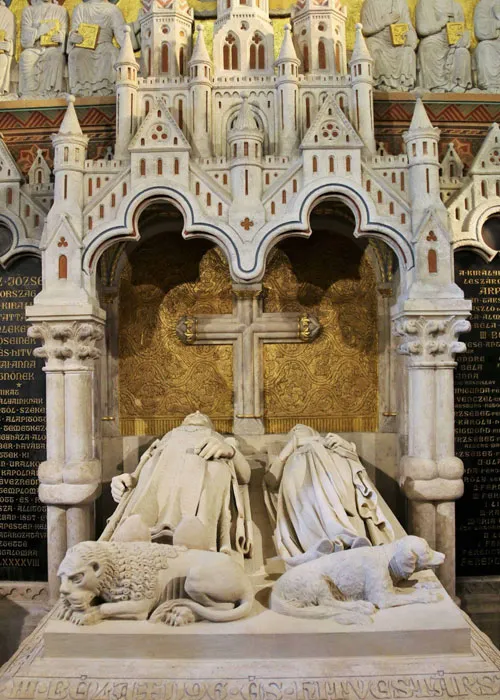
In one of the north chapels is the tomb of King Bela 111, king of Hungary and Croatia from 1172-1196, and his wife Anne (Agnes) of Antiocha. The remains of both of them are buried in the chapel, the only royal couple whose bones were not thrown out by the Turks. The lion at his feet symbolizes power, and the dog at her feet symbolizes faith and loyalty.
St Laszlo Chapel
The fresco shows scenes of the life of the king and knight, who ruled between 1077-1095. He was loved and respected, perhaps even more so that St Steven.
Main Altar
In the main chancel. The top section is dominated by Our Lady with a crown. Pope John Paul visited twice and administered a vesper ceremony: one time he sat on the throne to the left of the altar.
Imre Altar
Schulek built a Neo-Gothic style chapel to praise the first Hungarian sacred family: King St Steven (Istvan), Queen Giselle and Prince St Imre who died young (1007-1031). The altar paintings depict the birth and upbringing of St Imre. After the premature death of Prince Imre, King Istvan was left without an heir so he bequeathed the country to Virgin Mary. That’s why she is depicted here with the Holy Crown on her head.
Statue of the Virgin Mary with Christ
Legend says that when the Turks put Buda’s castle under siege, people hide the statue inside a wall. The Turks didn’t find it. In 1686 an explosion demolished the walls revealing the statue. The Turks took this as a sign so they gave up this part of the castle without a fight.
Stained Glass Windows
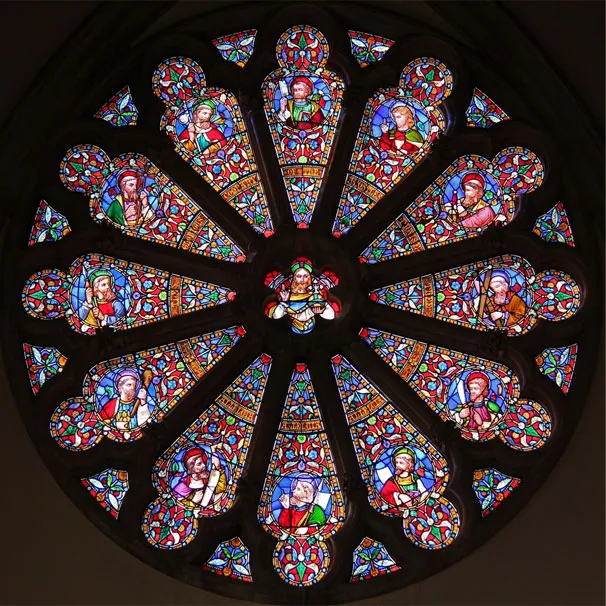
During World War II, Budapest suffered heavy losses and the church too was damaged partially. Fortunately, some of the church’s valuables like the painted window glasses made by Bertalan Székely and Károly Lotz, which were hidden during the war, escaped the shattering effects of bombs. They can be still seen in their original form on the Southern side of the church.
Bell Tower
The highest spire (60 m) of the church. The 5 floors are from the 13th-15th century while the top with jagged stone carvings, a balcony and balustrades are the work of Frigyes Schulek from the 19. century. On the third floor of the tower, on the southwest side, there is a duplicate of the shield of King Matthias placed there in 1470.The original is on display inside the church.
The church bells are hanging in the chamber behind the shield. Only three of them survived; the biggest one weighs 3.2 tons and can tolls at noon.Today the church has 7 bells. Six of them are located in the bell tower and the last damaged bell hangs in the cavalry tower. Three of the tower’s bells are historic bells (from years 1723, 1724 and 1891). The church received four new bells in 2010, and at that time the St. Károly bell sound correction took place.
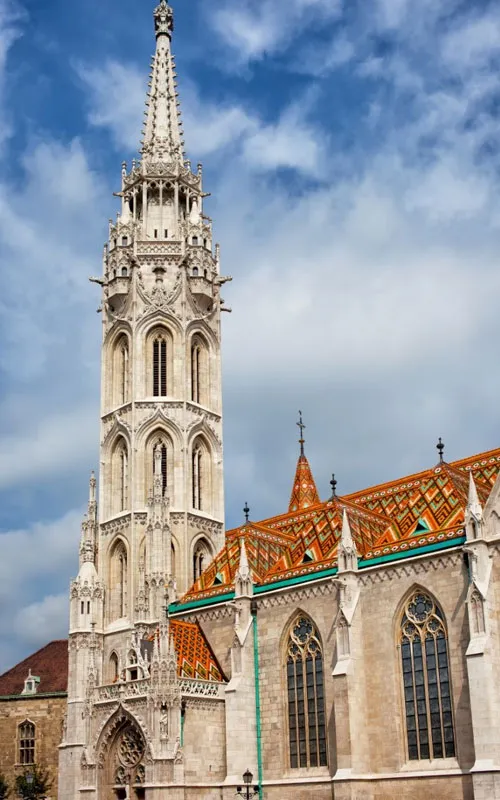
Concerts in Matthias Church
In the footsteps of the church music traditions of the Church of Our Lady of Buda going back over 300 years, several foreign church choirs and ensembles with a repertoire comprising church music give concerts in the historic building with unique atmosphere. Matthias Church is not only one of the top attractions and one of the most romantic places to see in Budapest but a perfect venue for classical concerts as well. Matthias Church Concerts are usually available every month throughout the year on affordable prices (tickets are from approx. €15). The concerts are provided by one of the most well-known ensembles in Hungary: the Hungarian Virtuosi Chamber Orchestra.
Matthias Church Today
Upstairs in Matthias Church is an ecclesiastical museum and, in the basement, visitors can view its crypt. It is part of Budapest’s UNESCO World Heritage listing. Due to its impressive acoustics, Matthias Church often hosts organ and classic music concerts.
Annual Feast Day
Feast day: 08 September
The annual feast day of The Church of Our Lady of Buda Castle, Hungary is celebrated on September 08 each year.
Mass Timing
Mon – Fri: 09.00-05.00,
Sat: 09.00 – 12.00, (on some Saturdays till 05.00)
Sun: 01.00 – 05.00, on religious holidays opening hours vary.
Once a year, on Holy Saturday (the Saturday before Easter), the church can only be visited by worshippers.
Contact Info
The Church of Our Lady of Buda Castle,
Budapest,
Szentháromság tér 2,
1014,
Hungary
Phone No.
Phone: +36 1 355 5657
Accommodations
Connectivities
Airway
The nearest airport to The Church of Our Lady of Buda Castle is, Budapest Ferenc Liszt International Airport (BUD) Budapest, which is just 44 min (24.3 km) via Liszt Ferenc Repülőtérre vezető út away from the basilica.
Railway
The nearest railway to The Church of Our Lady of Buda Castle, Budapest-Keleti, Budapest, Kerepesi út 2-4, 1087 Hungary which is just 17 min (6.4 km) via Rákóczi út away from the basilica.


